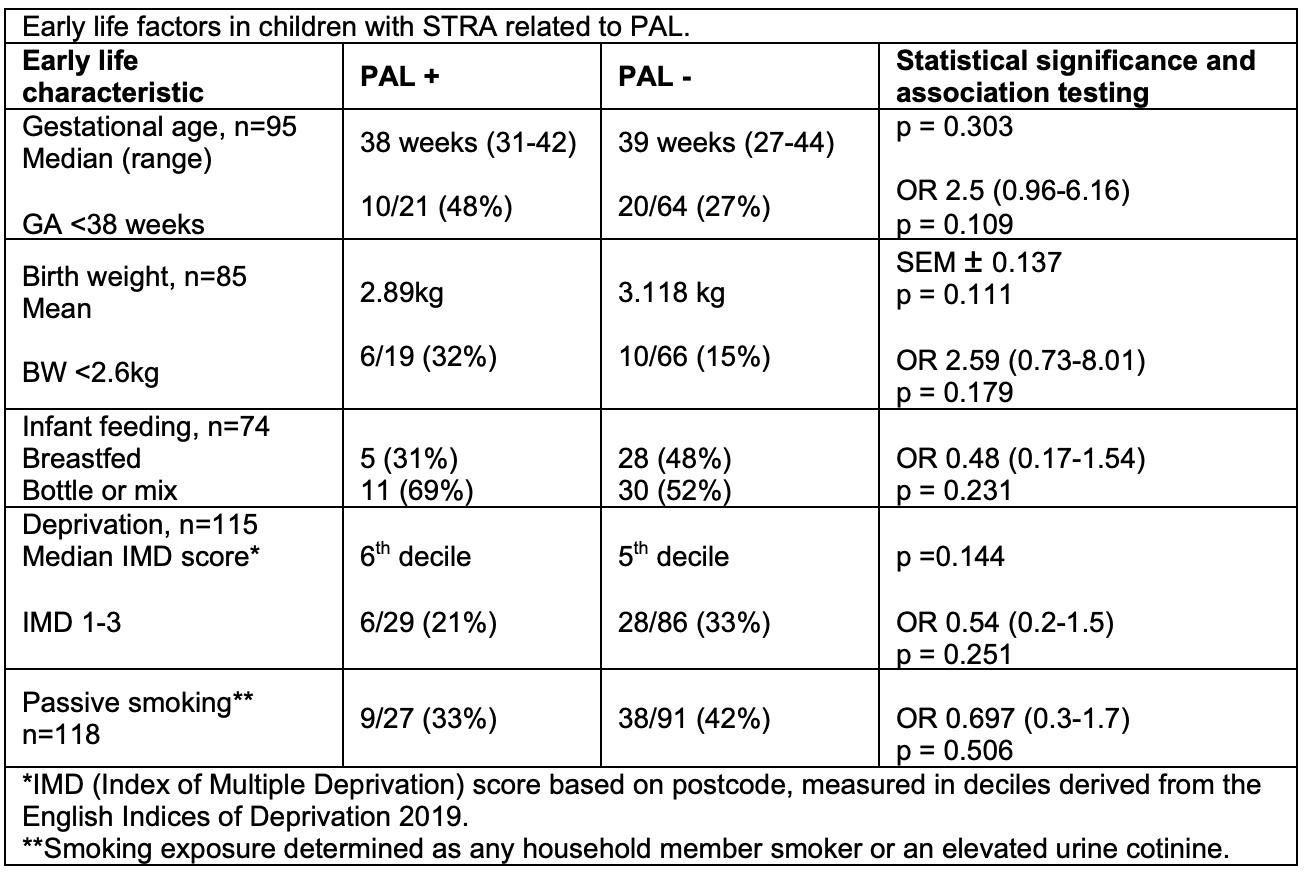Abstract
Early life adverse exposures are associated with unfavourable lung function trajectories in population-based studies. The association in children with severe therapy resistant asthma (STRA) and persistent airflow limitation (PAL) is less well described.
Methods:
Retrospective review of 147 children with STRA. 120 had complete spirometry data and PAL was defined as FEV1 z score ? -1.96 post systemic steroid trial (IM triamcinolone) and post bronchodilator. Early life factors assessed included birthweight (BW), gestational age (GA), infant feeding, passive smoking and index of multiple deprivation (IMD).
Results:
The median FEV1 was 86% predicted, Z-score -0.685; PAL was identified in 30 children (25%). Low birthweight (LBW) < 2.6kg was associated with reduced overall FEV1 z-score, -1.553 vs -0.658 (p 0.04) but not significantly with PAL. Early life factors associated with PAL are summarised in fig 1.
Conclusion:
PAL is common in children with STRA, affecting 25%. LBW was associated with a lower FEV1 but there were no associations with early life risk factors and the development of PAL. This suggests the mechanism for PAL in children with STRA differs to that of the general population or those with less severe asthma. Further work will assess clinical and pathobiological factors associated with PAL in this cohort.
